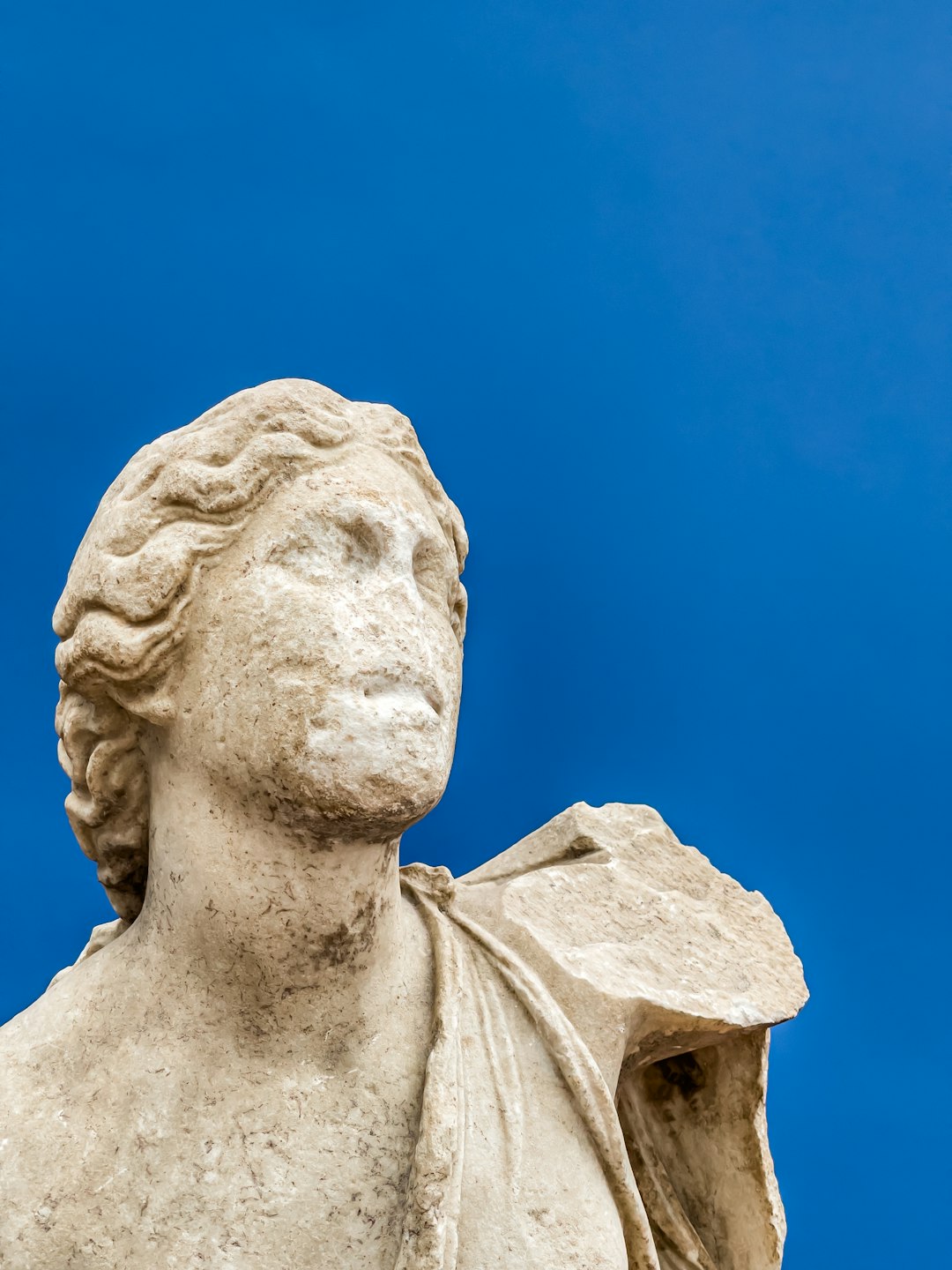Teaching literary context, 1: conceptions of time
What is time?
Every year, I end up delivering the same lecture to my A Level and GCSE students: an overview of context from the first text chronologically (Romeo and Juliet, c.1595), to the present day. It takes anywhere between 1 and 3 lessons. I do it because students struggle to visualise history, meaning that they can struggle to access texts. One thing contextual knowledge does is give the student a series of ‘acceptable ways in’ — if they know which ideas were circulating in a given period, and why, they can bring these to the text. It’s a good step towards getting them to write conceptually, which is the most significant divide between average responses and excellent ones. Therefore, I thought it’d be worthwhile to formalise the content of the lecture, not only to make my own planning easier, but also because it might help someone else — students and teachers. Writing also makes me realise where my own gaps are, and helps me discover novel connections.
Before we start, though, I want to establish the ways in which I’ll be thinking about history and time. The first is based on ideas from Venkatesh Rao’s 2018 post, The Age of Early Divinity.
Time is hard to make sense of. Rao, in keeping with his theme of divinity, uses the metaphor (we have to use metaphor to describe time, but the metaphors we use reveal who we are, which means that the way we talk about time is both influenced by our metaphors and reflective of our zeitgeist).
Chronological perceptions of time
First comes our chronological perception of time: time measured by watches, graphs, charts, calendars. It’s time as data, recordable and recorded macro and micro, and extended via forecast and modelling into the future.
Narrativist perspectives of time

Second comes a narrativist perspective of time. This view frames time, and human lives, as accumulations of significant events — it’s the tendency to turn time into something digestible, something with a plot. History is descended from the Latin historia, and wasn’t defined as discrete from ‘story’ until the 1500s. I’ll explore the potential significances of this in a later post, but for now consider how during this period people are starting to think more humanistically, and are less willing to accept dogmatic religion. In any case, the story in historia lives on. It’s what’s led to grand narratives and golden ages, such as the Belle Epoque or Elizabethan era. Narrative must eschew completionism, which is a double-edged sword: what’s left out is rendered invisible, silenced and erased. The old maxim of history is written by the victors here is proven true, though it’s perhaps more accurately phrased as history is written by those with the power to write it. Because this narrative form of history is the story of power: of empire, war and monarchs. It is a story of taking and losing, of killing and attempted immortality, of fear, and of love. If this all sounds like Romanticism, it’s because it is: it speaks to a post-Romantic tendency to centre the human (see Romantic notions of genius), but there’s a catch here: who gets to be ‘human’? Scholars of race and its interplay with other disciplines, such as literature, history and linguistics, are still unpicking the complex network of assumptions that many take for granted when we discuss humanity — this will also be fleshed out in more detail another time, but see these posts for some related thoughts:
White man writes about race
Still reading all the Shakespeare. Got a bit mired a while back and didn’t publish much; however, urged by Austin Kleon, I’m trying to show my work more. So here’s a screenshot of what I’m working on: an essay about Othello’s erasure by Iago as one of self-fashioned ‘whiteness’ needing to paradoxically construct and destroy ‘blackness’.
Book Notes: A Little History of Literature, John Sutherland
What is literature? Goodness knows I’ve read a lot of answers to that recently. I’ve taken it upon myself, as both a teacher of secondary English and person who really likes reading, to embark on a structured project to improve my knowledge of and around English literature. I’ve made a reading list; for each book I read, I’m going to write a blog post. …
Universal humans?
Curious about a comment of Terry Eagleton’s from How To Read English Literature: human beings are not fundamentally all that different from each other, a truth postmodernists are reluctant to concede. We share an enormous amount in common simply by virtue of being human.
Aionic time

Thirdly, we can see time from beyond it, or out of it. By this, we are zoomed out and think about the ‘canvas’ on which a period / era is ‘painted’. Rao coins ‘aionic time’ for this conception of time. It’s distinct from the narrative sense above in that it isn’t about the individual stories, but more the way we tell the stories. What narrative tropes does the period lean on? How does it cycle? What maps does it trust? I repeat for clarity: if narrativist perspectives of time are the painting, aionic time is the canvas.
Gods made and remade

Each of these periods are assigned a metaphorical ‘god’1: Chronos, Kairos, Aeon. Rao is most interested in the third conception, because his speculative theory of how history works (which is rooted in the maxim ‘we make our tools and then our tools make us’) fits quite neatly to them:
First we make our tools: the things we make that define an age. For example, the printing press and the early modern period.
Once we have these tools, they shape who we are. Rao alludes to Woolf’s (1924) Mr Bennett and Mrs Brown, which he says is basically about how we made clocks and now clocks control us, which makes sense: capitalism relies on the standardisation and colonisation of time. This gives us the character of an age, about which we can concoct narratives.
After this, it’s a case of remaking gods — or, to be more specific, re-conceiving what a god is, and what our relationship to it needs to be, given our current technological advances but, crucially, our current limitations. This view leads towards the materialism and physicalism of scientific rationalism, because it sees gods as gods of the gaps — this is the idea that we only have gods to account for our current shortcomings in terms of science and technology. There are two logical extensions of this: we’ll either eventually close all the gaps, and therefore need no more gods (or, as Rao argues, admit that we’re already gods, and that ‘we might as well get on with it’2); alternatively, we’ll never close the gaps. This binary possibility is analogous to the current state of consciousness discourse: consciousness as illusion, after Dennett vs panpsychism, after Goff. The remaking of gods happens in such a way to help human beings make sense of our overall place in the world, and our relationship with it and the 'material universe'.
A quick NB, though. This is painting with quite a universalising brush, and I have learned to beware the universality of the ‘we’ because it encourages conceptions of history that erase minoritised peoples. Perhaps Rao’s theory is useful in this regard, if we use it to shape our current sense of humanity to be inclusive. The paradigm has to shift. Perhaps, then, posthumanism is where we need to go: we need to remake ourselves not as gods, but as humans (as Rao writes), but with the added stipulation that our remaking must be one of humility, in which we re-voice the voiceless, and undo years of harmful erasure.
Some highlights from Rao’s essay
The first dimension is chronological, objective time, presided over by Chronos, he of the hood, scythe and bony finger. That gives us a history of notable calendar dates, a present of calendar appointments, and a future of election forecasts. A grim accumulation of all-the-data-so-far, statistically extended into the near future by Nate Silver, Philip Tetlock, and Nassim Taleb.
The second dimension is subjective, narrative time, a sense of the history as an coherently event-full container presided over by Kairos, our carpe diem! friend with the pair of scales and questioning eyebrows, constantly challenging us to seek luck and challenge fate with every moment. This dimension is a story of risk and reward, daring and timidity, seizing the day, or failing to. A story with a discernible plot that passes through the bottleneck of present situation awareness and diverges into a multiverse of possible scenarios in the future.
The third dimension is a sort of out-of-time eternalist sense of the texture of a period. Its warp and woof, its patterns and cycles. Aionic time, which I wrote about in my last post. It is less a kind of time per se,and more a collection of atemporal narrative tropes; the tactical gestalt of a storytelling style. It is the canvas rather than painting.
Rao’s ideas seem similar to those of Ludwig Feurbach, who argued that each aspect of God corresponds to a human need. Feurbach was a critic of religion, best known for The Essence of Christianity, in which he argues that every aspect of God corresponds to some human need. God is therefore nothing less than man; he is the outward projection of man’s nature. He further argues that the qualities of omniscience, benevolence and omnipotence are themselves divine; having them makes God divine, not the other way around. “If man is to have contentment in God,” he writes, “he must find himself in God.”
This, according to Rao, is ‘the line Stewart Brand stole from anthropologist Edward Leach for the inaugural Whole Earth Catalog: We are as gods, and might as well get good at it.’





